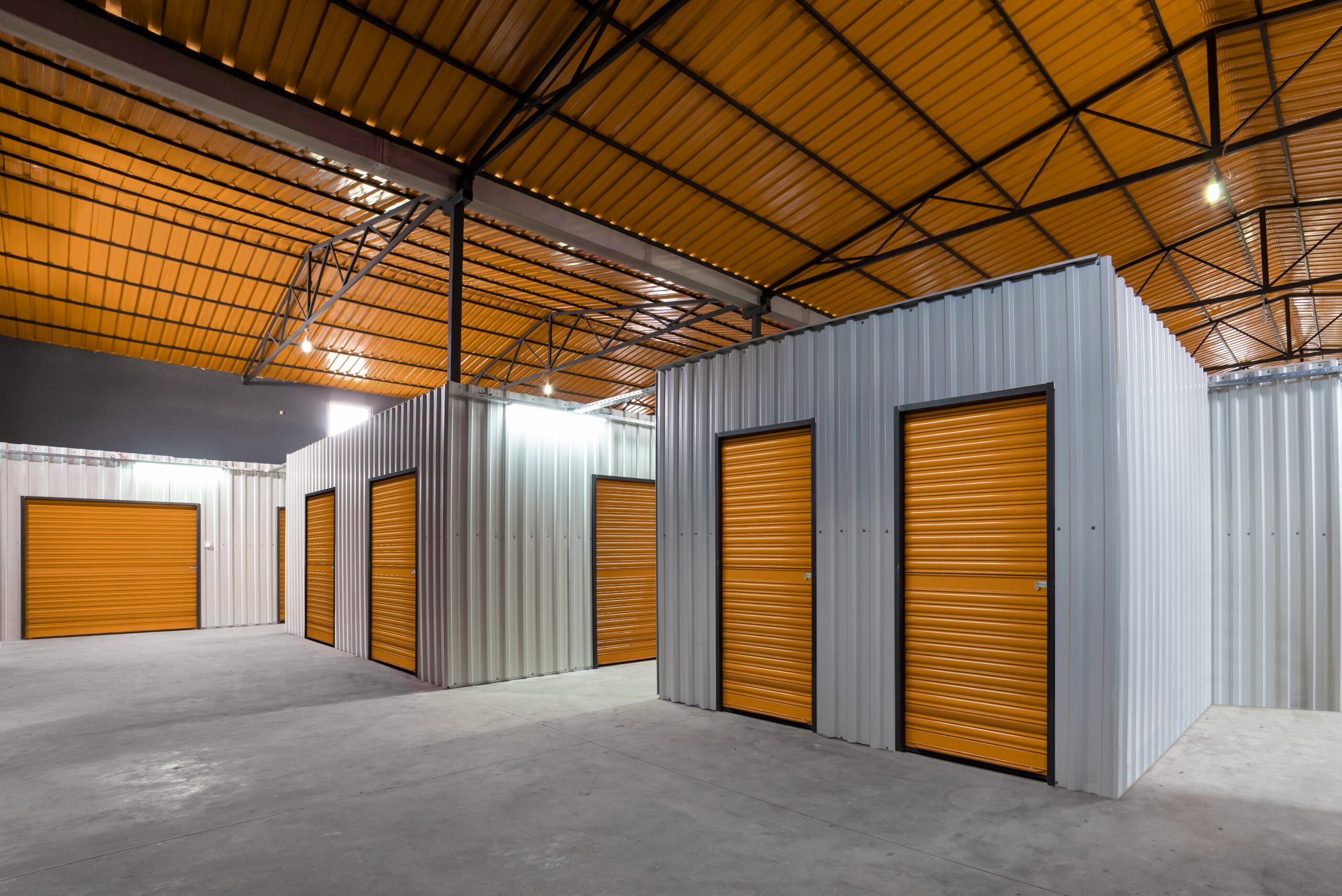Comic books have been an inexpensive and reliable source of entertainment for readers since the 1930s, but some issues and collections can be worth a lot of money for those willing to preserve them. Whether you’re holding on to comic books for sentimental value or you have a treasure trove of valuable issues stored in a box somewhere, it’s important to understand the best ways of preserving them and preventing wear and tear.
Luckily, a climate-controlled self storage unit is perfect for storing a comic book collection while minimizing the risk of environmental damage. In this article, we’ll go over some tips for protecting your collection, finding the right storage facility for your needs, and taking every precaution you can so your favorite comics last for years to come.
How do I prepare comic books for storage?

The first step towards keeping your comic collection in good shape is handling it with care. If you like to read your comics regularly, make sure you wash and dry your hands before handling them–wearing gloves while handling each issue will further protect them from the dirt and oil that tends to linger on hands. Keeping these irritants away from the paper your comics are printed on will prevent mold, mildew, and stains from finding their way in.
When storing and organizing your comics, even on a casual level in your home, be sure to bag and board them–store them in airtight plastic bags with rigid cardboard inserts, specially made for preserving comics. “They are sturdy enough that they will not allow your comics to bend, which will mean that you won’t get any rips, tears, or creases in your comics during storage,” says Trevor Van As of HowtoLoveComics.com.
Storing your comics in boxes will help you organize them and further protect them from the elements. Many boxes will work for this purpose, but we recommend seeking out comic book storage boxes in particular–they’re specifically sized to fit a single row of comics. Short boxes can fit 150-200 issues and weigh about 30 pounds when full; long boxes can hold up to 300 issues and can weigh more than 50 pounds.
Van As recommends storing your comics in these boxes in a vertical file format, which makes it easier to flip through your collection within the box. He also doesn’t recommend stacking too many of these boxes atop each other: “Having them stacked on each other can also cause the comics to bend in the center, as the spine is generally thicker than the rest of the comic book. While a few [are] fine, after a certain amount, the stack starts to create a U shape.”
Van As says that the most common material for these boxes is thick, corrugated cardboard. However, he recommends plastic boxes to protect more valuable comics. Drawer-style boxes–which open from the side rather than from the top–are also made of cardboard, but are often sturdier than lidded boxes, allowing for easier stacking.
How do I pick the right storage unit for my comic collection?
Once you’ve bagged, boarded, and boxed your comic collection, you should seek out an appropriate space to store it. While using extra space in your home can be tempting, this often leaves your collection vulnerable to temperature and humidity damage, especially if you’re storing it in a basement or attic. Luckily, a storage unit is an inexpensive and high-quality alternative to storing comics in your home and preserving sensitive, vintage ink and paper.
“Storing your comics safely is key to preserving your collecting,” says Bob Bretall of ComicSpectrum.com. “Storage units are a great alternative to home storage if your collection is growing.”
Bretall currently has more than 95,000 unique comic books in his own personal collection, with more than 100,000 when counting duplicates and magazines. However, when he had a smaller house and smaller collection, he kept the bulk of his comic books in a storage unit. “That’s the thing with a large comic collection—having a safe and secure place to keep them is very important.”
A climate-controlled unit should be first on your list of features to seek out when researching storage units for your comic books, according to Bretall. “Comics don’t like high temperatures,” he says. “Keeping them someplace climate-controlled is important.”
For best results, seek out an indoor storage facility, as these are best insulated from the elements by other storage units and won’t have the exterior storage issue of sunlight heating the doors. Climate-controlled self-storage should be able to control both temperature and humidity, but if humidity control isn’t available, Bretall recommends using silica gel desiccant packs, which absorb moisture and keep humidity from damaging your collection.
Both Bretall and Van As recommend seeking out robust security features in addition to climate control–specifically, units with individual alarms, gated access, and surveillance cameras. Most of these features are industry standard for indoor storage, but be sure to carefully research units near you to make sure they have exactly what you’re looking for.
Although it’s not a regular occurrence, Van As says valuable comic book collections have been stolen in the past. He adds that any collections from the golden and silver ages—ranging from the late 1930s to 1970s—can be considered a target and should be given more of a security priority.
How do I properly pack my comics in a storage unit?
Once you’ve decided on a storage facility that fits your comic collection’s needs, you should consider what unit size you require before making your first rental payment. The kinds of boxes you’re storing your comics in will play a major role in this decision: “Normal comic boxes are not built to bear the weight of too many extra boxes stacked on top of them,” Bretall says. “Typically, you want to optimize your use of storage space, which usually means wanting to use vertical space as much as possible.”
Standard lidded cardboard comic book storage boxes can safely be stacked up to three high without risking much damage to their contents. A 5×5 unit could hold a collection of seven long boxes, two rows deep, and three layers high, for a total of 42 boxes. However, this arrangement can make it difficult to move through your unit, so you may want to invest in a slightly larger unit and line the walls with your stacked boxes.
Bretall says that drawer boxes can be stacked up to six boxes high, allowing you to use more vertical space and save horizontal space. However, you’ll most likely need extra horizontal space to allow these drawers to open.
“That’s always going to be a trade-off though,” Bretall explains. “You can fit more regular long-boxes stacked flush up against one another on shelves, but then it’s really difficult to get to the stuff that is not in the front rank. If you use drawer boxes, you can open them and access the books, but that sacrifices precious space that you’re paying a monthly rental fee for.”
It’s also important to take steps to protect your collection from water and pests, which can damage your collection during storage. “Never store your boxes directly on the floor,” Bretall says. “Get some kind of shelving, or at least platforms that keep the bottom row of boxes at least a couple of inches off the ground. This will protect you from errant leaks that put water onto the ground.”
You can also protect your collection from any overhead water drips, such as from in-unit fire suppression systems, by covering your boxes with a tarp or a sheet. As for pests like insects and mice, which can eat away at paper, Bretall says they’re “a fact of life, so you need to worry about managing them.” A reputable storage facility will have built-in pest control to keep them away, but just in case, it’s useful to put mousetraps or mothballs in your unit.
How can a comic book store or business use a storage unit for extra inventory?
If you own a comic shop or online business and you don’t have room in your home or storefront to keep all of your back issues, a climate-controlled storage unit is a perfect solution to preserve comics, both old and new. Follow the above tips to prevent moisture and pest damage.
Heavy-duty drawer boxes in a larger storage unit will be your best bet if you plan on storing comics that you intend on storing, sorting, and removing them from the unit regularly. Rent a unit with enough space to open drawers, and make use of all of your vertical space when stacking these boxes.
Keep a clear document on your phone or computer to identify how you’ve sorted your comics (by title, author, or publisher) and update it regularly as you sell and acquire your inventory. You should also label the boxes so you know what’s inside them at first glance while visiting the unit.
In conclusion
Whether you’re keeping a comic book collection for sentimental or monetary value, you should consider investing in a climate-controlled self-storage unit to store it–you’ll save space in your home or business and protect your comics from temperature and humidity changes. These units are inexpensive and easy to rent, and you’ll most likely find plenty near you by using our search tool.
Storage.com can easily help you narrow down your self-storage search by price range, features, and location. If you’re looking for more personalized help, give us a call at 8333729881 to speak to an expert and find the perfect solution for your needs.






